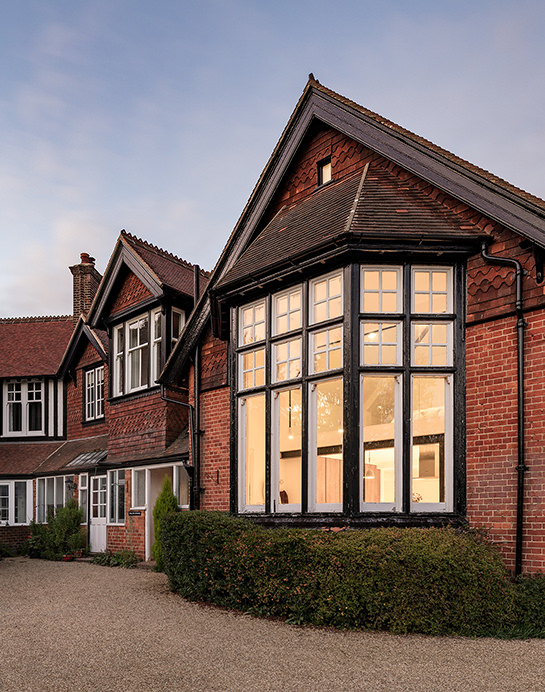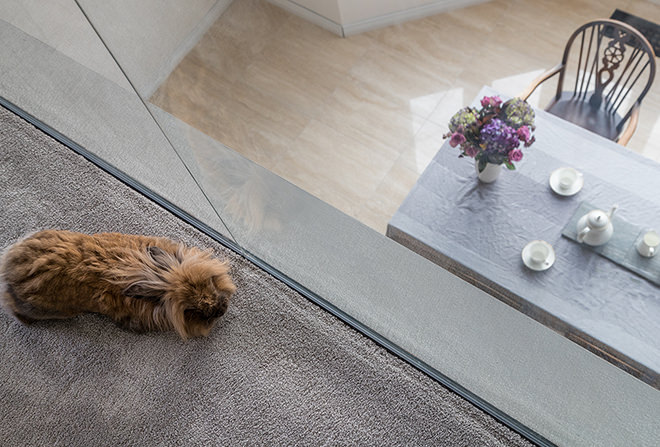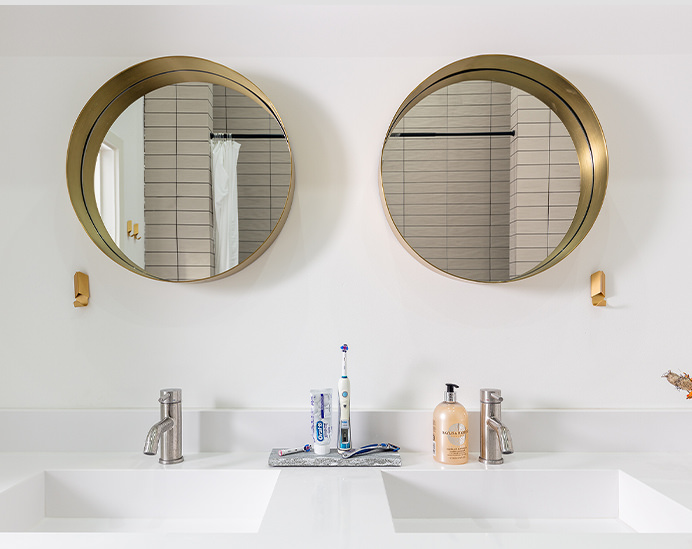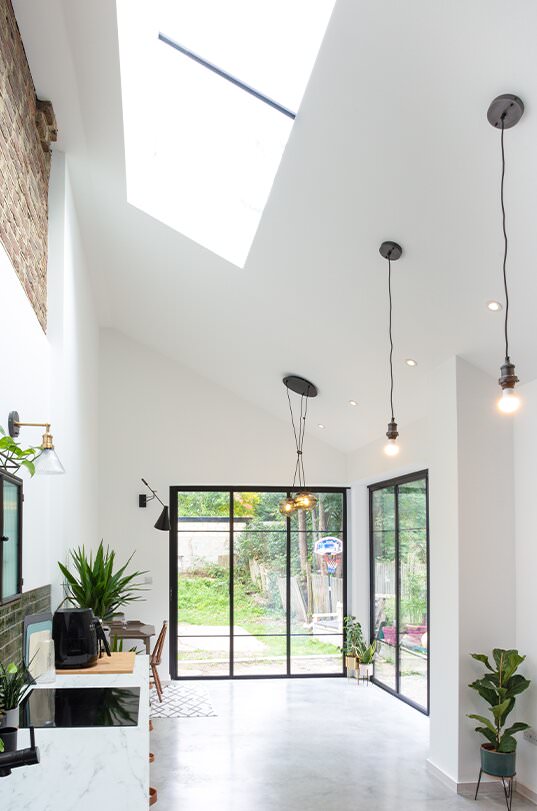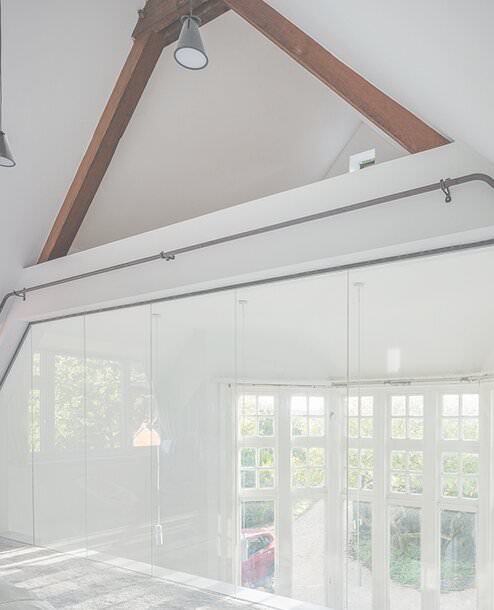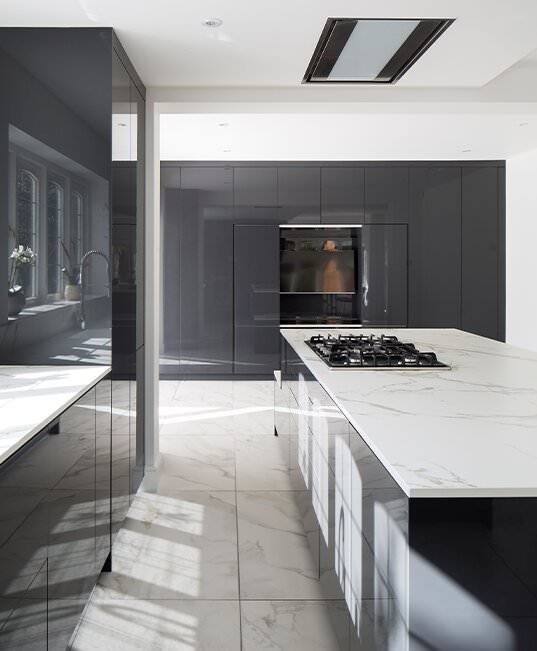A Guide to Converting a Shop into a Residential Home
November 11, 2022
Britain has been in the depths of a housing crisis for more than 30 years, with no signs of it improving.
And with the decrease in people using brick-and-mortar shops to buy their goods – thanks in part to eCommerce and the pandemic – it comes as no surprise that people have become more and more interested in converting these now empty shops into residential homes.
And with the newly introduced Permitted Development Rights (PDR), the door is now wide open.
Table of Contents
• Permitted Development Rights for Shops to Residential Change of Use
• What are Use Class E Buildings?
• What are Use Class C3 Buildings?
• Can Any Shop be Converted into Residential Use?
• What Part of a Shop Can Be Converted into Flats?
• What Other Commercial Properties Can Be Converted into Residential Homes?
• What Are the Criteria for Shop-to-Residential Conversions?
• Can I Still Convert the Shop if It Is Listed?
• What Were the Previous Arrangements?
• What to Do Before Converting a Shop into Residential
• But What About Planning Permission?
• Advantages of Converting Shops into Residential Homes
• Disadvantages of Converting Shops into Residential Homes
• Will this Help the High Street?
• Need a Hand from Experienced High-End Architects?
Permitted Development Rights (PDR) for Shops to Residential Change of Use
On August 1st, 2021, the new permitted planning development rights (PDR) came into force. These new rules allow the conversion of any Class E building into a residential space (C3 ‘dwelling house’) without the need for full planning permission if certain conditions are met.
All you have to do is notify your local authority of your intentions and gain what is called prior approval.
What are Use Class E Buildings?
Use Class E, of the Use Classes Order 1987, covers most types of commercial buildings, including:
• Shops
• Restaurants
• Offices
• Banks
• Gyms
• Workshops
• Clinics
• Estate Agents
What are Use Class C3 Buildings?
Use Class C are buildings made for accommodation, be it temporary or permanent. Under Class C, we have Class C3 which is specifically for houses, flats, and apartments. To have Class C3 planning usage, the residential property must be occupied by either:
• A single person or people living together as a family.
• No more than 6 residents living together as a single household (including a household where care is provided for residents).
Can Any Shop be Converted into Residential Use?
The new permitted development rights regulations set out the following:
• The property being converted must have been vacant for at least three months* before any planning application can be made.
• You can’t use permitted development rights to build extra storeys on a building, as you could do with some Class O conversions.
• The commercial premise being converted must have been in Class E (or equivalent) for at least two years.
• Every habitable room in the residential conversion must receive natural light.
• All flats or houses must meet minimum space standards.
* While it may look like a unit is vacant, there may be merit in including evidence in any prior approval application. Such evidence may include:
• Lease termination documents/inventory
• Photos
• Google street view images
• Vacant business rates confirmation
What Part of a Shop Can Be Converted into Flats?
Class MA allows you to convert up to 1,500 square metres of a shop into residential. This can mean just the ground or upper floors or the entire building.
Also of note is that all new dwellings must meet the link="https://www.gov.uk/government/publications/technical-housing-standards-nationally-described-space-standard">Nationally Described Space Standards. These standards state that a single-bedroom flat for one person must have a floor area of at least 39 square metres if the home has a bathroom, or 37 square metres if the space has a shower.
What Other Commercial Properties Can Be Converted into Residential Homes?
Besides Use Class E buildings, the following commercial properties can be converted into residential homes:
• Agricultural buildings
• Amusement centres
• Betting offices
• Casinos
• Takeaway shops
• Launderettes
• Payday loan shops
• Pubs
Most of the above properties will need to get prior approval before building starts. If your project doesn’t require prior approval, it’s still worth getting a Lawful Development Certificate (LDC) to prove the lawfulness of past, present, or future building use, operations, or other matters.
What Are the Criteria for Shop-to-Residential Conversions?
Under Class MA (Mercantile to Abode), your local planning authority will have to consider the following criteria before giving you prior approval:
• If the planned conversion is in a known flood area, then the council can prevent it from going ahead if they believe it won’t be able to adequately mitigate flood damage.
• There must be safe access and transport to all residential properties even those that were once shops.
• If the residential space is going to be within an old industrial building, then local authorities will need to ensure new residents will not face any risks from industrial contamination.
• If the planned conversion is in an area that is predominantly populated with commercial premises, then the council may deem it unsuitable for residential use.
• Access to adequate natural light in all habitable rooms is a minimum requirement for any residential conversion. This is often a significant barrier for larger conversions such as department stores or supermarkets as windows can be few and far between in these types of premises.
• Residential conversions can be rejected if the area they are in is considered important for heavy industry and waste management.
• If the planned conversion is in a conservation area or national park, the council can reject your application if they feel it will harm the area.
• If the commercial property is a registered nursery or health centre, the council can reject your application when there are no nurseries or clinics nearby.
• If the planned conversion will be within a designated area of natural beauty or scientific interest, then it can be rejected by local authorities.
• If the planned conversion will be within a safety hazard area or military explosive zone, then it can be rejected by local authorities.
Can I Still Convert the Shop if It Is Listed?
It is possible for you to convert a listed shop into a residential property. To do this, you will need to undertake the full planning permission process and you may have to provide the architectural drawings to your local planning authority (LPA).
They may specify that whatever work you’re planning is completed to a specific standard or may require specific building materials to ensure it preserves the building’s history.
What Were the Previous Arrangements?
We should mention that permitted development rights to convert commercial premises into residential housing have been around for a long time.
The current PDR to create new homes include:
• Class M: Ground-floor shops
• Class G: Rooms above shops
• Class O: Offices
Before the introduction of the new Use Class Order 2020 and Use Class E in September 2020, converting a commercial property to a residential fell under two classes of change of use that were vastly different from one another:
• Class M: Shops to homes
• Class O: Offices to flats
Class M had the most restrictions, including a maximum size of 150 square metres. It also had special clauses allowing councils to turn down conversions if they believed it would disrupt key shopping areas or would deprive local residents of essential services.
Unlike Class M, Class O could be used in conservation areas, national parks, and areas of outstanding natural beauty. It also had no size limits. This resulted in some very unfortunate flats that were tiny and void of any windows – making them near unliveable.
The new Class MA introduced a more generous size limit of 1,500 square metres. It also removed the clauses that could let councils prevent conversions in key shopping areas. It can also be used in conservation areas.
However, councils are allowed to consider whether a ground-floor conversion in a conservation area can go ahead. But this does not apply to national parks and areas of outstanding natural beauty.
What Does ‘Sui Generis’ Mean?
Sui generis is a Latin term that means “in a class of its own”. In the world of planning, this essentially means buildings that are in their own unique use class, and fall outside of the defined classes covered above.
Sui Generis buildings include:
• Nightclubs
• Cinemas
• Casinos
• Pubs
• Dance halls
• Music venues
• Fuel stations
• Launderettes
• Hostels
• Betting shops
Please note that this isn’t an exhaustive list. And if you do want to convert one of these buildings into residential housing, you’ll need to consult an architect to figure out your options.
1) Double-Check It’s Eligible
As mentioned above, many commercial properties can be converted to residential. However, you should always make sure before you commit to buying. Please refer to the above sections for what the criteria are.
These types of examples aren’t strictly off-limits but will require full planning permission and providing architectural drawings to your local planning authority (LPA). There are different sets of rules between different local authorities, so it is always worth checking with them before going ahead with any big decisions.
2) Change the Building’s Use Class
In order to convert a shop (or any other commercial building) into a residential property, you’ll need to apply to change the use class. This is different to seeking planning permission.
3) Plan Your Budget
Conversions can be expensive - especially when changing the use of a commercial building. This is why you should work out what you can afford to spend before searching the market.
You are guaranteed to run into unexpected additional costs, so it’s worth giving your budget a lot of buffer space if you want to avoid your conversion being derailed.
Besides costs such as stamp duty tax, planning permission applications, and architect fees, you will most likely need to take on additional building work. This can include soundproofing the property and adding extra windows or thermal insulation to make it more suitable to live in.
4) Arrange Financing
There are many different ways to fund your shop to residential conversion. However, the best way to decide will be to speak to your lender to find out what options are available to you.
Most buyers tend to turn to mortgages to finance their conversion. If you’re considering going down this route, then there is a set of criteria you must meet to be eligible.
The first thing to consider is whether you will apply for a commercial or residential mortgage. The biggest difference between the two is:
• Commercial Mortgage - the building and the cash flow it produces qualifies the mortgage for funding.
• Residential Mortgage - your employment status, and your income, together with any spouses and/or partners will qualify you for funding.
The next thing you’ll need to consider is that residential mortgage lenders will require the property to be in a certain state to approve financing - usually once the conversion is complete. This is why you will most likely have to apply for a commercial mortgage first.
Once the conversion is completed, you will need to be registered as the property’s owner for at least six months before applying to change your mortgage to a residential mortgage. Interest rates for commercial mortgages are always higher so it’s best to move to a residential option as soon as possible.
But before you do anything, it is vital that you consult with an experienced mortgage broker (who handles both commercial and residential mortgages) before making committing to anything.
5) Do Your Research Before Buying!
Now it’s time to look ahead and think of the future of the property you wish to buy. Ask yourself these questions:
• Are you planning on renting? Is there a high demand for rental properties in the area?
• Do you want to sell it? What kind of price are you expecting to sell it for?
• What is the surrounding area like? Will this impact your finished conversion?
• Have you received any quotes from local companies? Do you have any idea how much this conversion will cost you?
6) Go Through the Process for Prior Approval
Now you have a property in mind, it’s time to go through the process for prior approval. To do this, you must submit:
• A description of the proposed development.
• Plans that are scaled and show North, indicating the site and the proposed development.
• Floor plan indicating total floorspace in square metres of each dwellinghouse, dimensions and uses of each room, position and dimensions of windows, doors, and walls.
• Existing and proposed elevations.
During this process, your LPA may request the following:
• Assessment of Transport and highways impacts of the development
• Assessment of contamination risks
• Flood Risk Assessment
• Internal daylight assessment
• Noise Impact Assessment
The costs for seeking prior approval are minimal and should not exceed £200.
7) Start Your Conversion
If you’ve made it this far, you now have everything you need to get started.
However, the new dwelling(s) must be completed within 3 years after you receive the grant of prior approval. You must then notify the LPA when the development has been completed.
The permitted dwellings must remain in C3 use and cannot change use. This includes changing it to a small, shared house of up to six unrelated individuals (classed as a C4 small HMO).
Although, it is possible to change your dwelling to a Class C3b or C3c which would not be considered development.
• Class C3b: “use as a dwelling house by not more than six residents living together as a single household, (including a household where care is provided for residents).”
• Class C3c: “allows for groups of people (up to six) living together as a single household. This allows for those groupings that do not fall within the C4 HMO definition, but which fell within the previous C3 use class, to be provided for i.e. a small religious.”
Once all is said and done, you might want to get a building completion certificate.
This is a document that will prove your new home has achieved the building regulation standard for things like structure, sanitation, thermal efficiency, and more. This typically makes for smooth sailing when it comes to selling your property, or in some cases re-mortgaging.
But What About Planning Permission?
As mentioned before, planning permission is not 100% necessary with the current permitted development laws. Although, there will still be some local authorities that are committed to protecting the availability of local commercial space, and may require it from you. This is why it’s important to check with a planning consultant or architect before making the plunge.
In 2017, permitted development rights changes made it possible to convert B1c (light industrial buildings) into C3 (residential dwellings) without full planning permission. B1c buildings are the popular commercial-to-residential conversions down to the fact that they are commonly found in residential areas. Conversions from classes A1 and A2 are also popular as they can also be carried out without full planning permission if their size does not exceed 150 square metres.
Just remember that even if planning permission isn’t required, you still need to seek ‘prior approval’ from your local planning authority. However, if you need to knock down walls or add an extension during your conversion, you will most likely need to obtain planning permission. And if you want to change the style of windows, move doorways and apply cladding, you will definitely need planning permission.
To avoid your commercial-to-residential conversion coming to a grinding halt due to delays, it’s definitely worth consulting an expert beforehand.
Advantages of Converting Shops into Residential Homes
• More homes – the housing crisis is only getting worse, so having more opportunities for affordable housing is surely a good thing.
• Prime locations – Commercial properties are typically built in areas that have great access to public transport or are in close proximity to city centres.
• Can be faster and less costly – Thanks to the new permitted development rules and Use Class E, you can expect the decision process to take 56 days (can extend for longer) and pay a £96 fixed fee. In comparison to a normal planning application, this is significantly quicker and cheaper for developers.
• Lower taxes – By converting a shop to a residential space, you’ll typically avoid higher stamp duty land tax (SDLT) rates if this is your second property. This is because non-residential and mixed-use properties are exempt. Instead, you’ll pay the standard rate of SDLT.
• Could revitalise our high streets – The rise of eCommerce and, of course, COVID have really put the UK’s high streets through the wringer. However, the new Use Class E means retailers and potential investors can turn unused shops into bustling new communities that can support the remaining shops.
• Healthier profit margins – Commercial properties can be cheaper per square foot compared to residential buildings. Converting a shop into a residential space could get you more on your investment compared to renovating a neglected house.
Healthier profit margins
Commercial properties can be cheaper per square foot compared to residential buildings. Converting a shop into a residential space could get you more on your investment compared to renovating a neglected house.
Disadvantages of Converting Shops into Residential Homes
• Conversions can be costly – In certain cases, a conversion could cost you more than building a new home from scratch. So always try and get a handle on how much your conversion will cost before signing the dotted line.
• Parking problems – Here’s where a great location could backfire if you own a car. Especially if the shop you are converting is located on a high street.
• Noisy area – The shop you wish to convert will most likely be in a busy area, so consider things such as noise from shoppers, lack of privacy, disruption from other shops, and potential security concerns.
• Some restrictions may still apply – PDR doesn’t always allow for external changes to be made. Some former shops could be stuck with big floor-to-ceiling windows and fully glazed doors.
Will this Help the High Street?
We don’t have crystal balls here at Vita Architecture, so we can’t confidently predict the future of retail. But we must admit, it’s not looking good. It certainly looks like everything is moving towards online shopping with the UK’s eCommerce market projected to grow by 12.63% (2022-2025) resulting in a market volume of US$285.60bn in 2025.
This growth comes down to several factors, including increased consumer confidence, the rise in loyalty programmes and, of course, the fallout from the pandemic. While it will be sad to see a large chunk of these shops go, we’d rather see that space put to good use as residential houses rather than boarded-up tributes to a bygone era. However, it must be a balanced and considered approach at a national government level. Losing retail space to residential is a permanent decision that will ultimately mean smaller high streets and towns, so we need to get the balance right!
Need a Hand from Experienced High-End Architects?
If you’re considering converting a commercial property into a residential property, we recommend talking to an expert architect before you commit to anything.
Get in touch today to start the conversation! Or give us a shout at either [email protected] or 0208 1441737.
